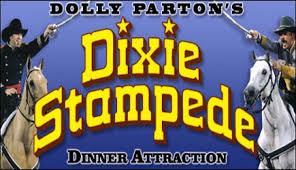What is power?
My first year in high school, I felt unseen. About 2000 students attended that school, and I joined the restless masses that thronged the halls at every bell. I had one friend, a holdover from grade school who felt as insignificant as I. We hatched a plan to get to school early one day and bring screwdrivers, with which to remove as many light-switch covers, and any other removable hardware, as possible. And we did. Because those were the days before surveillance cameras, we got away with it. The only effect was this: for the next few days, every time I passed one of those little acts of vandalism, I thought, I did that.

It was small and silly, but at the time I was small and silly too. Still, I wonder if I was motivated by the same impulse that causes spray-painted slogans and smashed windows.
That’s one form of power: the ability to be heard, be seen, and make changes. Over the last few weeks it has mostly been exercised by people who feel themselves powerless, at least individually. Corporately they march in the streets, hoping to impose change by signs and slogans—or spray paint and Molotov cocktails. Certain kinds of change will almost certainly happen: the law and policy kind. The heart kind of change has already happened, sparked by a 9-minute video. That’s the same way hearts were changed almost 60 years ago. by news footage of police clubbing people on the Edmund Pettis Bridge and setting their dogs against peaceful protesters.
The protests (not the riots) are a result of that heart change, not a cause. Any meaningful change, in policy or attitude, will come from the heart, not from law or policy.
Here’s another definition of power, from Culture Making by Andy Crouch: “the ability to successfully propose a new cultural good.” Notice the verb. Political change must be imposed by law and threat. Cultural change can only be proposed, by persuasion and example. Imposition forces; proposition appeals. One breeds resentment, the other sympathy. To take one example, the legalization of same-sex marriage came about not by vandalizing wedding chapels and boycotting Bed Bath and Beyond, but by persuading enough of the public that marriage was a basic human right, to which many of our fellow humans were unfairly deprived.
Emotional appeals work true and lasting change more than angry demands. Both are forms of power available even to the powerless, but how successfully any group proposes a new “cultural good” (such as meaningful change in race relations) depends on when, where, and especially how the proposal is made. Anger is powerful, but by nature anger doesn’t last in its purest form—it quickly burns off into resentment, vindictiveness, opportunism, radicalism, rationalization, frustration, apathy, and a host of other negatives.
“American race relations” is a huge, complex topic that has already taken up entire library stacks. I can’t address it in a column, except to say this: No one (except perhaps the very old, the very young, or the very sick) is completely powerless. Everyone has a certain degree of power and a platform for using it. Some will have a lot more than others, but all it takes is a voice, a mind, and a will.
The question is, what will you do with it?
The world proposes one way: get in their face and make demands.
Jesus offers another way: He who would be great among you must become your servant—not by groveling, but by hearing, encouraging, and investing.
Martin Luther King understood this. He could not make America change her biases, but he could persuade her to change her heart by harnessing the influence of the black church, challenging the conscience of the white church, inspiring youth, and reminding his fellow Americans of their founding ideals. He invested his power in service, not violence. As much as some present-day activists would like to deny it, change happened (I was there; I saw it).
They say peaceful power doesn’t work anymore. I say it’s the only thing that works. Destruction squanders power (I did that); investment builds it. Whatever you have in your hand builds your power base, which grows as you share it with someone else: knowledge, skill, connection, even friendship. This kind of power doesn’t spread as rapidly as the other kind, but it’s more durable, and certainly more stable.






